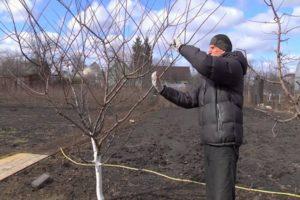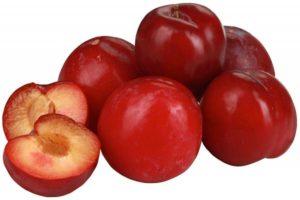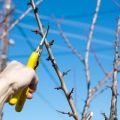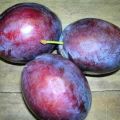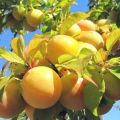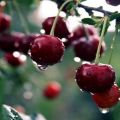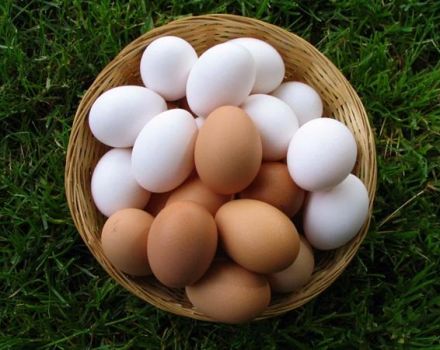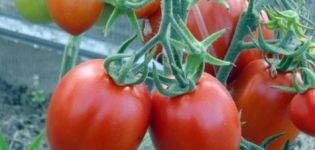Description of the Ternovka plum variety, selection of seedlings, planting and care
Plum varieties Ternovka or - "bilasuvar", has a lot of useful properties, is saturated with vitamins. It is a blue-black fruit widely distributed in many areas of the CIS. The fruits hang on the branches before the frost arrives, which allows them to be consumed until late winter. Plum is grown even in Siberia, it is one of the most frost-resistant subspecies. The tree is fruity, but some gardeners call it a berry. In order to safely grow a variety, you need to familiarize yourself with its features, a description of the technology of care and feeding.
Description and characteristics of Ternovka plum
The thorn plum was bred by nature itself. Having appreciated its advantages, breeders began to work on breeding new hybrids. Ternovka belongs to the Pink family, a plum genus. Previously it was considered a variety of thorns. They really have a lot in common.
Brief characteristics of the Ternovka tree:
- Appearance. A shrub with thorny branches, grows up to 4 meters high.
- Ternovka's leaves are small, up to 5 centimeters, oblong, ovoid.
- The tree has abundant flowering, the flowers are snow-white, single, 3 centimeters in diameter. There is a waxy coating on them.
- The pulp has a sweet and sour taste. The weight of Ternovka fruits is 15 grams, the diameter is 4 centimeters. There is a bone inside.
- Fruiting at Ternovka is stable, the berries ripen by the end of August or September from the 2nd year of life. After ripening, they do not fall off, but hold tightly to the branches until winter.
- The tree can withstand frosts up to 40 degrees, survives in northern latitudes. It is one of the most frost-resistant crops. It takes root also on poor soils.
- The variety is famous for its immunity to diseases and pests.
- Drought tolerance at Ternovka is high, rapid recovery of frozen root system.
The longer the fruits hang on the branches of the tree, the sweeter they become and lose their astringency. Ternovka is able to endure any weather disasters, except for salty boggy soil.
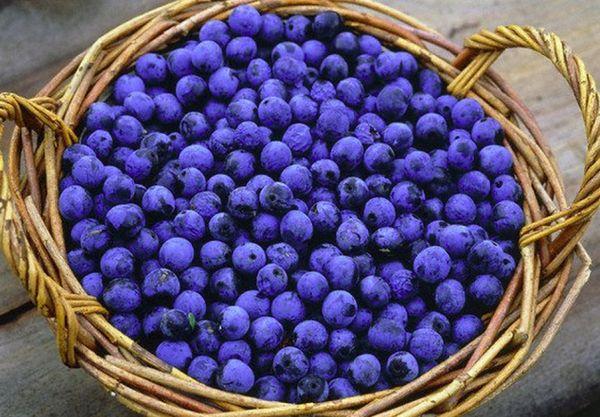
The plant is saturated with amino acids, pectin, fiber, tannins. It is widely used to improve health.
Ternoslum has such effects on the body:
- cleans from toxins and toxins;
- reduces cholesterol levels due to vitamin PP;
- cleans blood vessels due to the presence of pectin in the composition, removes even radioactive metals;
- promotes weight loss.
Ternovka plum has antibacterial and anti-inflammatory properties. Fruits have a mild laxative and diuretic effect, are useful for cholecystitis, hepatic, renal pathologies.Ternosplum improves appetite, digestive process. It also reduces the intensity of stomach pain. Even a small amount of berries can increase intestinal peristalsis.
Differences between thorns and thorns
The sloe is a shrub, but it bears fruit with tasteless berries. It is often confused with hardy. By crossing these varieties, a sweeter crop was developed. Almost all useful elements were transferred to Ternovka.
- Unlike thorns, berries are much larger in size, sweeter, juicier, less tart.
- The blackthorn is not as prickly as the blackthorn. Harvesting is easier.
- Both fruits have a similar chemical composition. The sloe contains 5-6% sugar, and the thorn contains 12-14%.
- The thorn is a symbiosis of a bush and a tree. In the wild, the plant looks like a shrub, and when grown in a garden, it stretches out, forming a stunted tree.
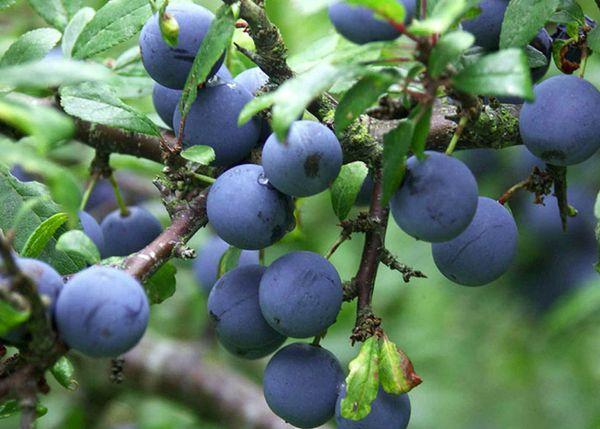
Even a novice summer resident can cope with the cultivation of thorny plums, subject to the rules.
Landing Ternovka
Ternovka is usually propagated by vegetative methods, by seeds - only for selection. The most popular cultivation methods:
- using root suckers;
- cuttings;
- vaccination.
The most convenient method is self-rooted seedlings, they are obtained from the growth, which is harvested in spring or autumn. Ternovka seeds are sown in October or April, using only fresh seeds. The pulp is completely removed from them before planting.
Choosing a site for planting
A Ternovka seedling should be planted in a place with a lot of sun, or in partial shade. In an area where there is a lot of shade, the intensity of flowering and yield will decrease near the tree. Plum does not tolerate stagnant water. In the place where it is planned to plant, there must be drainage. It is not advisable to give preference to acidic soil, it should be neutral. Most of all, thorny plum loves clay soils. Fertilize the soil in autumn, 2 months before planting with manure, superphosphate, potassium salt. First, dig up the ground.
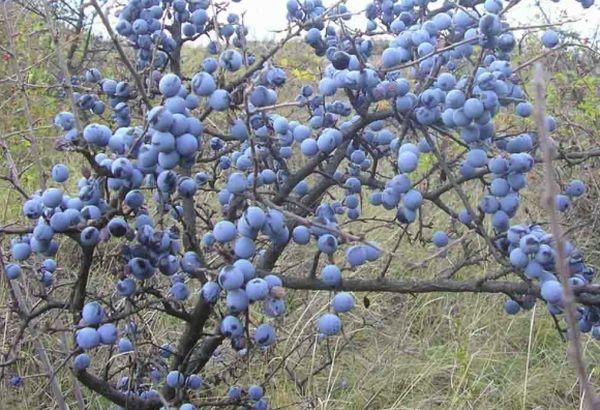
Methods for obtaining seedlings
The healthiest and strongest specimens of Ternovka are selected, located farther from the trunk. They have a better developed rhizome, it is easier to separate them. Having dug out the shoots, look at the root system of the future tree. If it is developed, you can transplant the Ternovka process to a permanent site. If not, grow it by cutting it to 25 centimeters and placing it in a nutritious soil.
Planting seedlings
It is necessary to plant seedlings 2-3 years old. Plum thorns, when properly planted, produce a bountiful harvest every season.
- A week before planting, dig holes. Put fertilizer and minerals in them. Ash, compost, humus, urea act as nutrients.
- To improve drainage, add some sand to the bottom. Stand the pit, after a week, place a prepared seedling.
- After planting, water the future tree abundantly every day for a week.
It should be borne in mind that Ternovka is growing a lot, take a wide place for it. The distance between plants should be about 4 meters.
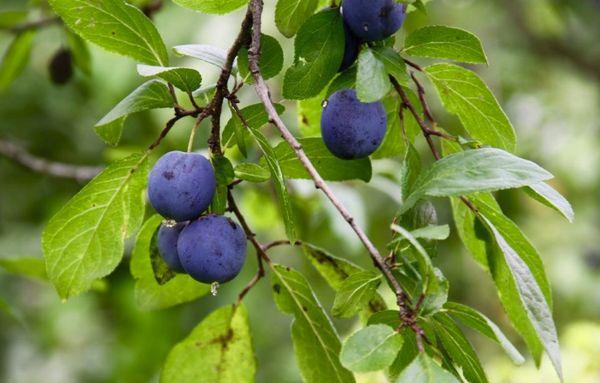
Further care of the culture
The tree does not require special care. Ternovka can grow without fertilizers, regular irrigation. Often summer residents plant the variety near the fence, thereby forming a bushy hedge. If a fertile crop is needed, care will be required for the thorny one.
It consists of the following activities:
- top dressing;
- timely watering;
- tying young seedlings so that they are not damaged by strong winds;
- pruning, crown formation;
- shelter for the winter;
- processing wood from diseases and pests.
It is also necessary to weed as the soil is compacted so that it is saturated with oxygen. Ternovka will thank the owners for the proper care with a prolific crop.

Watering and feeding
Ternoslum is a moisture-loving plant, although it does not require regular watering. In order for the tree to bear fruit abundantly, it is watered once a week, in hot weather, especially abundantly. Apply warm water. Cold watering is not worth it, as the tree will drop all the plums and the crop will be lost.
Fertilize Ternovka with humus or other organic matter in the spring. To increase the fertility of the tree, it is advisable to use several fertilizing with mineral complexes with nitrogen. It is undesirable to take fresh manure, it is dangerous for the rhizome and contributes to the growth of weeds.
Pruning plum
Gardeners usually do not prune Ternovka, which entails the proliferation of its branches. The tree needs to form a sparse-tiered crown, make it bushy. The formation of a bush is considered the most time consuming process in the care.
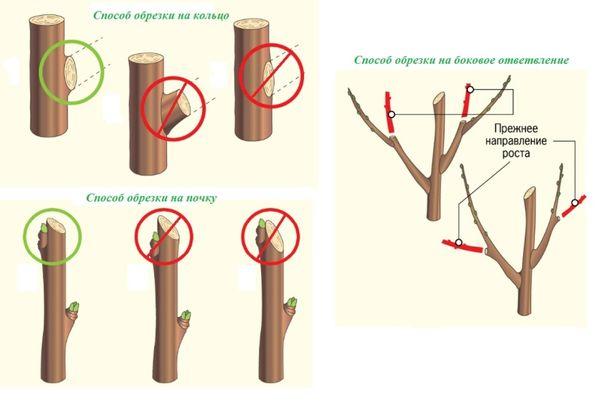
During the growing season, the plum is cut three times:
- in late March;
- in the last days of June;
- at the end of July.
There are several options for pruning the Ternovka tree.
- To maintain the given shape, to maintain the fertility of the tree, sanitary pruning is done. Damaged, dry and diseased branches are excised.
- Anti-aging pruning is done to prolong the life of the tree. Several fruiting branches are cut off, and a year later, the remaining skeletal branches are shortened by 1/3.
- Thinning pruning of the tree prevents thickening, which does not allow light to penetrate to the fruit. If the Ternovka is bushy, no more than 5 fruiting branches are left.
- Forming pruning - done if the thorny plum is used as a hedge. The crone is given an attractive look. When the tree grows old and freezes, the powerful shoots stimulate rejuvenation and regeneration.
Pruning with a sharp pruner, after disinfecting it.
Wintering
An adult thorny plum does not require shelter from the cold. It is advisable to protect young seedlings from frost by covering with a non-woven cloth like burlap, having previously made a wire frame. The tree is protected from rodents. To prevent them from attacking in winter, trample the snow around it, close the bole with roofing material or barbed wire. If Ternovka is frozen, it is restored thanks to stab shoots and root growth.
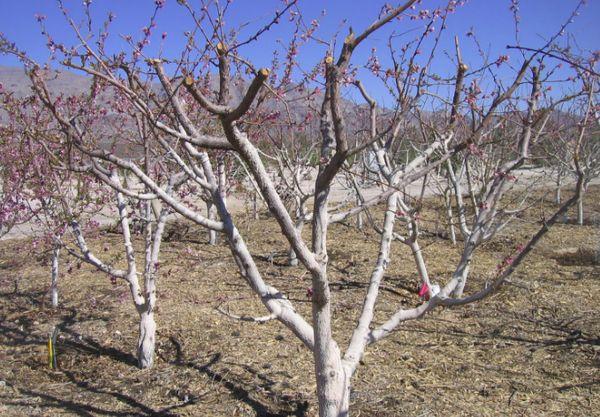
Protection against diseases and pests
Ternovka can be affected by fruit rot, pockets, sharka, dwarfism. You need to deal with them as follows:
- from rot use copper or iron sulfate;
- from the pocket, the tree is sprayed with Bordeaux liquid during pollen and during the formation of berries;
- regular removal of pests, cutting with a disinfected pruner helps from sharki;
- dwarfism cannot be cured; trees are uprooted and burned out.
Beetles are not able to significantly harm the thorny, they should not be feared.
Harvesting and storage
It is advisable to pick thorny berries after the first cold weather. By this time, the content of tannins in the fruits is reduced, they become more tasty and saturated with vitamins. The harvest is good, kept fresh for about 30 days. The fruits are eaten fresh, or compotes, preserves, jams are cooked from them. Ternovka is held in high esteem by winemakers who make wine or strong alcohol from it with a tart taste.
